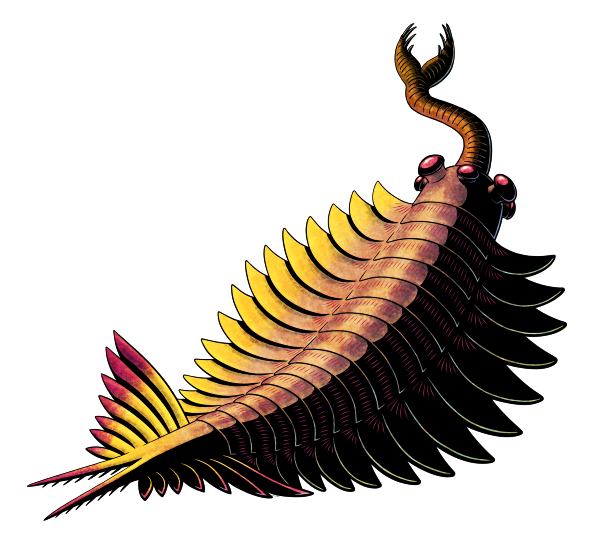Ever since the bizarre anatomy of Opabinia was first recognized in the 1970s, it’s been a persistently unique “weird wonder” of the Cambrian period. Over the decades we’ve figured out that it was an early type of arthropod in an evolutionary position between lobopodians and radiodonts, but this whole time it’s still been sitting there alone as the only known representative of a weird stem-lineage with no other known close relatives.
…Until now!
A fossil from the Wheeler Shale in Utah, USA (~507 million years ago) that was originally thought to be a tiny radiodont has been re-studied, and now we finally have another member of the opabiniid family: Utaurora comosa.
Only about 3cm long (1.2″), Utaurora had 15 pairs of swimming flaps along the sides of its body, and a tail region with a 7-part fan and a pair of serrated spines. Hair-like gill blades covered both its back and the bases of its swimming flaps, and although its head region was poorly preserved it probably had an arrangement of 5 eyes and a long flexible claw-tipped proboscis similar to that of Opabinia.
Its discovery extends both the geographical and temporal known range of opabiniids, and suggests that their continued scarcity in other Cambrian fossil sites compared to other soft-bodied arthropods may simply be because they were just incredibly rare animals in those habitats at the time.

